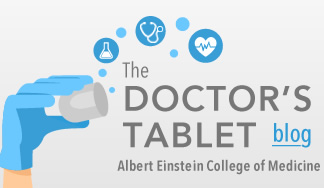Jewish Genetics
New Study Defines the Genetic Map of the Jewish Diasporas
August 6, 2012 — (Bronx, NY) — A new genetic analysis focusing on Jews from North Africa has provided an overall genetic map of the Jewish Diasporas. The findings support the historical record of Middle Eastern Jews settling in North Africa during Classical Antiquity, proselytizing and marrying local populations, and, in the process, forming distinct populations that stayed largely intact for more than 2,000 years. The study, led by researchers at Albert Einstein College of Medicine of Yeshiva University, was published online today in the Proceedings of the National Academy of Sciences.
“Our new findings define North African Jews, complete the overall population structure for the various groups of the Jewish Diaspora, and enhance the case for a biological basis for Jewishness,” said study leader Harry Ostrer, M.D., professor of pathology, of genetics and of pediatrics at Einstein and director of genetic and genomic testing for the division of clinical pathology at Montefiore Medical Center. Dr. Ostrer noted that obtaining a comprehensive genetic fingerprint of various Jewish subpopulations can help reveal genetic links to heart disease, cancer, diabetes and other common diseases.
In a previous genetic analysis, the researchers showed that modern-day Sephardic (Greek and Turkish), Ashkenazi (Eastern European) and Mizrahi (Iranian, Iraqi and Syrian) Jews that originated in Europe and the Middle East are more related to each other than to their contemporary non-Jewish neighbors, with each group forming its own cluster within the larger Jewish population. Further, each group demonstrated Middle-Eastern ancestry and varying degrees of mixing with surrounding populations. Two of the major Jewish populations—Middle Eastern and European Jews—were found to have diverged from each other approximately 2,500 years ago.
The current study extends that analysis to North African Jews—the second largest Jewish Diaspora group. Their relatedness to each other, to other Jewish Diaspora groups, and to their non-Jewish North African neighbors had not been well defined. The study also included members of Jewish communities in Ethiopia, Yemen and Georgia. In all, the researchers analyzed the genetic make-up of 509 Jews from 15 populations along with genetic data on 114 individuals from seven North African non-Jewish populations.
“Our new findings define North African Jews, complete the overall population structure for the various groups of the Jewish Diaspora, and enhance the case for a biological basis for Jewishness.”
– Harry Ostrer, M.D.
North African Jews exhibited a high degree of endogamy, or marriage within their own religious and cultural group in accordance with custom. Two major subgroups within this overall population were identified: Moroccan/Algerian Jews and Djerban (Tunisian)/Libyan Jews. The two subgroups varied in their degree of European mixture, with Moroccan/Algerian Jews tending to be more related to Europeans—most likely stemming from the expulsion of Sephardic Jews from Spain during the Inquisition, starting in 1492. Ethiopian and Yemenite Jewish populations also formed distinctive genetically linked clusters, as did Georgian Jews .
Dr. Ostrer’s paper is titled, “North African Jewish and non-Jewish populations form distinctive, orthogonal clusters.” Additional Einstein contributors include: Christopher Campbell, Gil Atzmon, Ph.D., Carole Oddoux, Ph.D., Alexander Pearlman, Ph.D., and Edward R. Burns, M.D. Other contributors include: Pier Francesco Palamara and Itsik Pe'er, Ph.D. (Columbia University, New York, NY); Laura Rodríguez-Botigué and David Comas Martínez (Universitat Pompeu Fabra, Barcelona, Spain); Marc Fellous, M.D., Ph.D. (Cochin Institute, Inserm, Paris, France); Li Hao, Ph.D. (University of Medicine and Dentistry of New Jersey, Newark, NJ); Brenna Henn, Ph.D., and Carlos Bustamante (Stanford School of Medicine, Stanford, CA); Maya Dubrovsky and Eitan Friedman, M.D., Ph.D (Tel-Aviv University, Tel Aviv, Israel).
The research was supported by grants from the Lewis and Rachel Rudin Foundation; the Iranian-American Jewish Federation of New York; the U.S.-Israel Binational Science Foundation; National Cancer Institute (CA121852) of the National Institutes of Health; and Ruth and Sidney Lapidus.
Other Top Stories
9/11 World Trade Center Exposure Linked to Heart Disease Among NYC Firefighters
On Becoming a Physician: New Einstein Students Receive White Coats and Stethoscopes
Novel Therapy for Acute Migraine Shows Promise in Phase 3 Clinical Trial
First Complete Wiring Diagram of an Animal's Nervous System
Multimillion Dollar NIH Grant to Help Reduce Opioid Use & Get Care to People Who Need It
NIH Grant Funds $23 Million Study of Diseases Affecting People Living with HIV
New TAILORx Data Guides Adjuvant Therapy in Younger Breast Cancer Patients
Einstein Celebrates Its 61st Commencement
Bolstering Biopsies: Testing Patients' Individual Cells to Guide Treatment



Tablet Blog